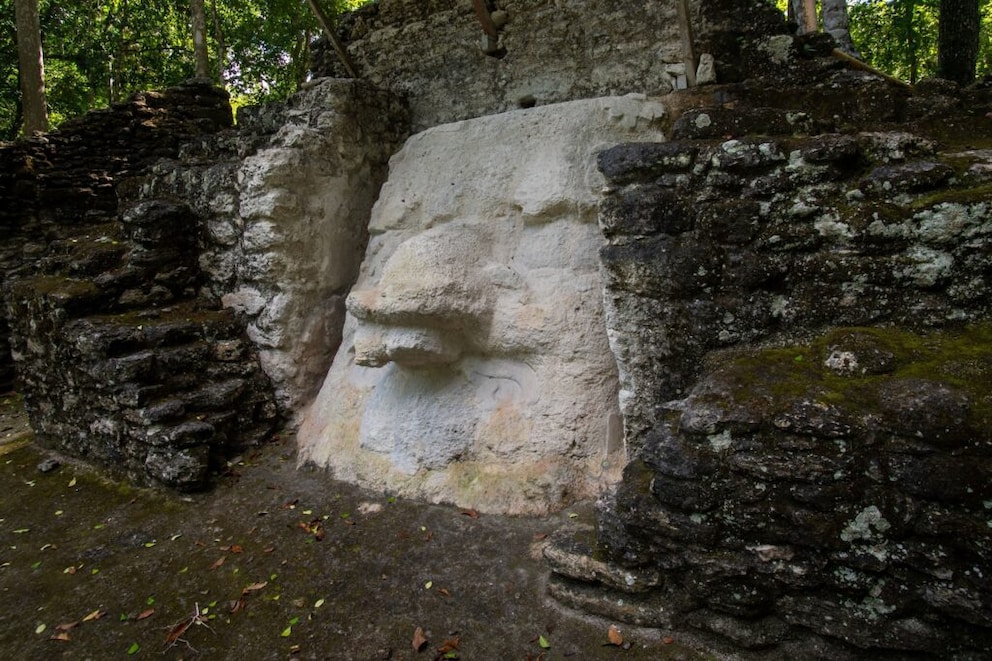New discoveries in northern Guatemala now seem to show that the Maya culture in the region was much more advanced than previously thought. Among other things, thanks to laser technology, scientists have discovered hundreds of sunken cities in the depths of the El Mirador jungle. There is now a first approach on how to better protect the cultural heritage and open it up to holidaymakers as soon as possible.
In the north of Guatemala, in the middle of the Mirador Rio Azul National Park, there is a place that scientists unanimously called the “cradle of Mayan culture.” Built more than 2,000 years ago, the ancient city of El Mirador (meaning “viewpoint”) was the largest city of the lost civilization, covering an area of about 15 square kilometres. But unlike its famous counterpart, Tikal, El Mirador’s remoteness means that only a handful of tourists make their way into and through the dense jungle each year. Stunning new discoveries in the area around the Mayan city are causing quite a stir.
Because an international team of scientists published one at the end of 2022 Stady, which could permanently change the view of the higher Maya culture. Accordingly, the indigenous peoples of the region of Guatemala today may have been more developed than previously assumed. New images taken using cutting-edge laser technology have now revealed a total of 417 cities buried deep in the jungle in the area around El Mirador, which according to “Washington PostIt can be dated to around 1000 BC. This indicates that the Mayan culture flourished supposedly 1000 years ago.
“An unknown chapter in human history”
The researchers used what is called lidar technology in their investigations. It stands for “Light Detection and Ranging”. Here, an accurate 3D map of ground conditions and any hidden structures located beneath the forest can be created using infrared lasers that are reflected from the Earth’s interior. The technology, which has been used in the area around El Mirador since 2015, has revealed a fine network of 177 kilometers of roads as well as 900 submerged Mayan settlements, which scientists call “the world’s first highway”. Evidence of highly developed irrigation systems and settlement structures has also been found.
Also interesting: in Guatemala, pizza is baked on an active volcano
According to the scientists, the study is one of the largest lidar studies into the field of Mayan influence in this region to date. Finds show that the culture based in the El Mirador Forest was highly developed and interacted with its environment in a variety of social, political and economic ways. These findings are a “game-changer” in consideration of the Maya culture from the so-called Preclassic period of about 1000 BC to the year 250. They could shed light on “an entire chapter of human history that was completely unknown before.”
Colossal pyramid of Khufu

In addition to dams and water reservoirs, lidar has also revealed previously undiscovered pyramids and Mayan play sites in El Mirador. The complex, which was only discovered in 1926, is truly amazing. to “Smithsonian MagazineAccording to him, several pyramids were discovered here, the highest of which, called “La Danta”, is 70 meters high. Its size is larger than that of the world famous Cheops pyramid in Egypt. Scientists assume that as many as 200,000 people lived in the former megacity, but it could have fed even a million people.
Lidar technology has helped researchers explore the region in a whole new way. Previously they were only able to locate about 50 structures buried under the forest, but by the time the study was published there were more than 900. Perhaps the most exciting discovery was the sunken city of Belmanal. There have been excavations here since 2009, but so far they haven’t even been able to show the true size of the Mayan city. And some are already dreaming that El Mirador could soon become a tourist magnet like Tikal.
Leave the ruin their secret
But the masses get in the way alone. Because so far you have to either walk more than 60 km from the next place to El Mirador. Or you can be transported by helicopter. But first of all, it should be about protecting the place and its finds accordingly. Again, Tikal can be a role model. It was named a World Heritage Site by UNESCO in 1979, and has special protected status. But there are also considerations for leaving the land to the descendants of the Maya and other indigenous groups, who make up 40 percent of the population in Guatemala.
Also interesting: Journey to Mayan Ruins and Volcanoes: Highlights of Guatemala
Meanwhile, scientists will continue to excavate new and startling discoveries about one of the most remarkable cultures in world history. Even on Tikal, which is visited by hundreds of thousands of people each year, only 15 percent of the former buildings have been excavated. About El Mirador should be much less. In this regard, one also has to ask oneself whether it makes sense at all to open the facility to tourism. In Tikal, people are still allowed to climb the magnificent pyramids. thus inadvertently contributing to further deterioration. Perhaps more secrets should be extracted from El Mirador before the magic of times past is destroyed by the masses.

“Certified tv guru. Reader. Professional writer. Avid introvert. Extreme pop culture buff.”







More Stories
Samsung Quantum Dot TV: Art meets technology
Pitch: €56m for energy startup Reverion
Plastoplan: Plastics for Energy Transition